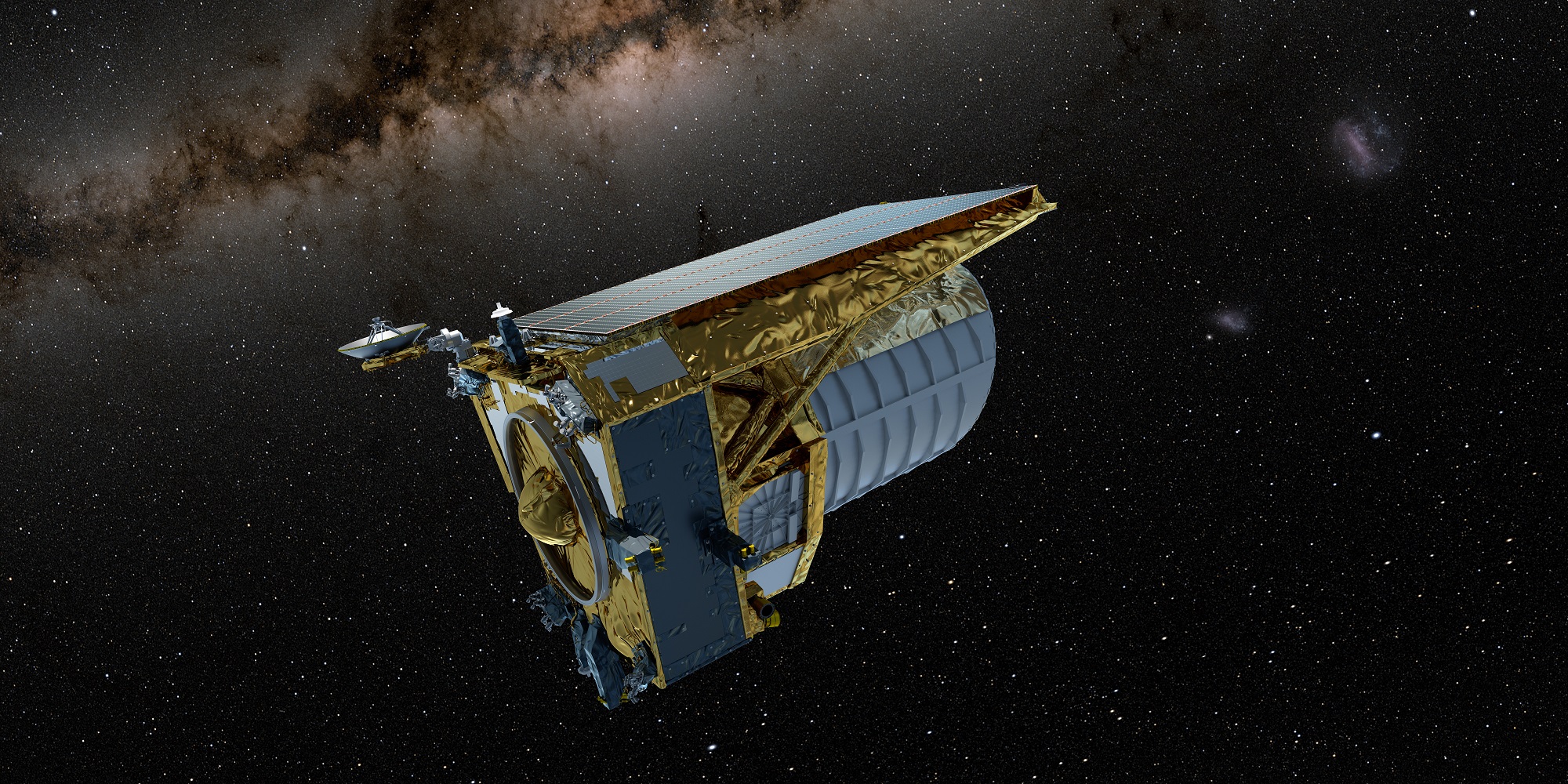

Artist impression of the Euclid mission in space. Credit: ESA
On July 1st, 2023, the European Space Agency (ESA) launched the Euclid Observatory, a mission that will spend the next six years investigating the composition and evolution of the Universe. In particular, Euclid will observe how the Universe has expanded over the past 10 billion years to test theories about Dark Energy. While fine-tuning and calibrating the telescope’s instruments in preparation for the mission’s first survey, the mission team noticed that a few layers of water ice formed on its mirrors after it entered the freezing cold of space.
While common, this is a problem for a highly sensitive mission like Euclid, which requires remarkable precision to investigate cosmic expansion. After months of research, the Euclid team tested a newly designed procedure to de-ice the mission’s optics. On March 20th, the ESA announced that the team’s de-icing approach worked (so far) and that Euclid’s vision has been restored. If the method proves successful, it will have validated the mission team’s plan to keep Euclid‘s optical system working for the rest of its mission.
The problem first became evident as science operations experts noticed a small but progressive decrease in light measured by the telescope’s VISible instrument (VIS). This instrument is responsible for measuring visible light from distant galaxies to determine how the light’s trajectory is affected by gravity fields. Mischa Schirmer, a calibration scientist for the Euclid consortium and one of the main designers of the new de-icing plan, explained in an ESA press release:
“We compared the starlight coming in through the VIS instrument with the recorded brightness of the same stars at earlier times, seen by both Euclid and ESA’s Gaia mission. Some stars in the Universe vary in their luminosity, but the majority are stable for many millions of years. So, when our instruments detected a faint, gradual decline in photons coming in, we knew it wasn’t them – it was us.”
It was always expected that there would be some water contamination with Euclid, which is why there was an “outgassing campaign” shortly after launch. This consisted of the telescope being warmed up by onboard heaters and also partially exposed to the Sun, sublimating most of the water brought from Earth. However, a considerable amount remained after being absorbed in the telescope’s multi-layer insulation, which slowly began building up on the VIS intrument’s mirror surfaces. After months of research, lab studies, and calibrations, the team determined the source and began working on a solution.
The obvious solution was to heat Euclid again by running all its internal heaters for days. However, this ran the risk of deforming the mechanical structure of the spacecraft, which could alter Euclid’s optical alignment. Said Andreas Rudolph, Euclid Flight Director at ESA’s mission control:
“Most other space missions don’t have such demanding requirements on ‘thermo-optical stability’ as Euclid. To fulfil Euclid’s scientific goals of making a 3D map of the Universe by observing billions of galaxies out to 10 billion light-years, across more than a third of the sky, means we have to keep the mission incredibly stable – and that includes its temperature. Switching on the heaters in the payload module therefore needs to be done with extreme care.”
The team began by individually heating two of Euclid’s mirrors independently, a low-risk approach since they are located in areas where water vapor was not likely to contaminate other instruments. After analyzing the initial results, the team found that Euclid’s vision was restored to its previous accuracy. However, this was a temporary solution, and a long-term strategy for regular de-icing is still being sought. In the meantime, the ESA promises to continue to monitor the telescope for changes and share any new findings publicly.
However, the response to this problem highlights the international cooperation that made this mission possible. Said Ralf Kohley, Euclid Instrument Operations Scientist who coordinated the response:
“A complex mission requires a united response from teams across Europe, and I’m incredibly thankful for the effort and skill that so many have poured into this. It took work from teams at ESA’s ESTEC technical heart in the Netherlands, the ESAC science operations centre in Madrid and the Flight Control Team at ESOC mission control in Darmstadt – but we couldn’t have done it without the Euclid consortium and the critical inputs we got from spacecraft prime contractor Thales Alenia Space and its industrial partner Airbus Space.”
In addition, this issue could lead to vital research on how to maintain missions where highly sensitive optics are concerned. Despite how common this issue is for spacecraft, there is very little research on how ice forms on optical mirrors and impacts observations. Therefore, the solution devised by the mission team and agency could lead to new procedures for future missions. These could come in handy when Euclid is joined by NASA’s Nancy Grace Roman Space Telescope (RST) in March 2027 – another mission that will explore the “dark Universe.”
Further Reading: ESA
Dubbed CADRE, a trio of lunar rovers are set to demonstrate an autonomous exploration capability…
Astronomers have identified sulfur as a potentially crucial indicator in narrowing the search for life…
Biologists identified a series of "hard steps" on the journey from abiogenesis - that life…
The supermassive black hole at the center of our Milky Way galaxy may not be…
For those who missed the memo, UFOs (Unidentified Flying Objects) are now called UAPs (Unidentified…
The Phoenix Cluster is one of the most massive galaxy clusters known. Astronomers have identified…